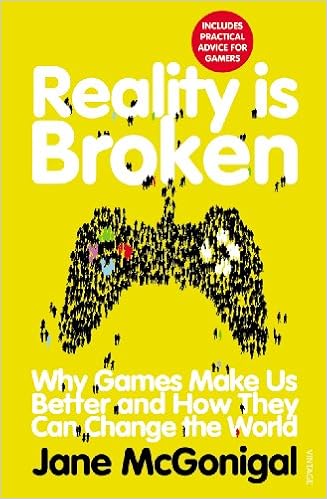

In In-Game, Gordon Calleja examines what exactly it is that makes digital games so uniquely involving and offers a new, more precise, and game-specific formulation of this involvement. One of the most commonly yet vaguely deployed concepts in the industry and academia alike is immersion—a player's sensation of inhabiting the space represented onscreen. Overuse of this term has diminished its analytical value and confused its meaning, both in analysis and design. Rather than conceiving of immersion as a single experience, Calleja views it as blending different experiential phenomena afforded by involving gameplay. He proposes a framework (based on qualitative research) to describe these phenomena: the player involvement model.

Videogames are an expressive medium, and a persuasive medium; they represent how real and imagined systems work, and they invite players to interact with those systems and form judgments about them. In this innovative analysis, Ian Bogost examines the way videogames mount arguments and influence players. Drawing on the 2,500-year history of rhetoric, the study of persuasive expression, Bogost analyzes rhetoric's unique function in software in general and videogames in particular. The field of media studies already analyzes visual rhetoric, the art of using imagery and visual representation persuasively.

In this new edition of the pioneering text, students learn to assess the major theories used to analyze games, such as ludology and narratology, and gain familiarity with the commercial and organizational aspects of the game industry. Drawing from historical and contemporary examples, the student-friendly text also explores the aesthetics of games, evaluates the cultural position of video games, and considers the potential effects of both violent and "serious" games. Extensively illustrated and featuring discussion questions, a glossary of key terms, and a detailed video game history timeline, this new edition is an indispensable resource for students, scholars, and teachers interested in examining the ways video games continue to reshape entertainment and society.

In this ground-breaking book, visionary game designer Jane McGonigaI challenges conventional thinking and shows that games - far from being simply escapist entertainment - have the potential not only to radically improve our own lives but to change the world.

An Introduction to Game Studies is the first introductory textbook for students of game studies. It provides a conceptual overview of the cultural, social and economic significance of computer and video games and traces the history of game culture and the emergence of game studies as a field of research.

In Homo Ludens, Johan Huizinga defines play as the central activity in flourishing societies. He identifies five characteristics of play: it is free; it is not “ordinary” or “real” life; it is distinct from “ordinary” life both as to locality and duration; it creates order; it is connected with no material interest, and from it no profit can be gained. With cross-cultural examples from the humanities, business, and politics, Huizinga examines play in all its diverse guises—as it relates to language, law, war, knowledge, poetry, myth, philosophy, art, and much more. As he writes, “Civilization is, in its earliest phases, played. It does not come from play like a baby detaching itself from the womb: it arises in and as play, and never leaves it.”

An exploration of why we play video games despite the fact that we are almost certain to feel unhappy when we fail at them.We may think of video games as being 'fun', but in The Art of Failure, Jesper Juul claims that this is almost entirely mistaken.

Why play is a productive, expressive way of being, a form of understanding, and a fundamental part of our well-being.
"What do we think about when we think about play? A pastime? Games? Childish activities? The opposite of work? Think again: If we are happy and well rested, we may approach even our daily tasks in a playful way, taking the attitude of play without the activity of play. So what, then, is play? In Play Matters, Miguel Sicart argues that to play is to be in the world; playing is a form of understanding what surrounds us and a way of engaging with others. Play goes beyond games; it is a mode of being human.

"Discover an exercise-driven, non-technical approach to game design, without the need for programming or artistic expertise with
Game Design Workshop, Fourth Edition. Tracy Fullerton demystifies the creative process with clear and accessible analysis of the formal and dramatic systems of game design. Using examples of popular games, illustrations of design techniques, and refined exercises to strengthen your understanding of how game systems function and give you the skills and tools necessary to create a compelling and engaging game. Game Design Workshop
puts you to work prototyping, playtesting, and revising your own games with time-tested methods and tools.